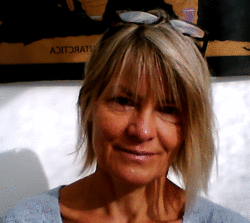Invited Talk Speakers
Prof. Dr. Tatjana Kleele
Assistant Professor, Institute of Biochemistry, ETH Zurich
Live-cell super-resolution microscopy of mitochondrial dynamics and function
Mitochondria are critical for many cellular processes, from ATP production, lipid biosynthesis and Ca2+ homeostasis to mediating cell proliferation, apoptosis and immunity. To account for these different needs, mitochondrial function is optimized by modulating their structural organization. Mitochondrial fission and fusion are central processes in adapting mitochondrial function and regulating cellular homeostasis. The inability of mitochondria to adapt their morphology leads to bioenergetic defects and an accumulation of damaged mitochondria. Using a powerful combination of quantitative super-resolution imaging of mitochondrial biosensors and proteomic approaches, we examine the link between mitochondrial ultrastructure and metabolic function, as well as the impact of mitochondrial dynamics on cellular fate and homeostasis.
Prof. Dr. Anne Puel
Génétique Humaine des Maladies Infectieuses/Human Genetics of Infectious Diseases, Université de Paris
Human host factors and susceptibility to severe viral diseases
SARS-CoV-2 infections are benign in most individuals but, in around 10% of cases, it triggers hypoxemic COVID-19 pneumonia, which leads to critical illness in approximately 3% of cases. The ensuing risk of death (approximately 1% across age and gender) doubles every five years from childhood onwards and is around 1.5 times greater in men than in women. I will review the molecular and cellular determinants of critical COVID-19 pneumonia. Inborn errors of type I interferons (IFNs) are found in around 1-5% of patients with critical pneumonia under the age of 60 years. Pre-existing autoantibodies neutralizing type I IFNs are found in approximately 15% of patients with critical COVID-19 pneumonia, mostly over 70 years old. Thus, at least 20% of cases of critical COVID-19 pneumonia can be explained by inborn errors of type I IFN-mediated immunity or neutralizing autoantibodies against type I IFNS, demonstrating their essential role for host protection against SARS-CoV-2.
Prof. Dr. Franziska Faber
Institute for Hygiene and Microbiology, Faculty of Medicine, University of Würzburg
Associated Group Leader, Helmholtz Institute for RNA-based Infection Research, Würzburg
A network of small regulatory RNAs regulating the formation of endospores in C. difficile
Enteric infections and their clinical outcome are often associated with underlying microbial dysbiosis. Clostridioides difficile - a leading cause of antibiotic-associated diarrhea—is a prime example: In healthy individuals, infection with C. difficileresults in asymptomatic intestinal colonization. But after antibiotic treatment, the pathogen can cause a wide spectrum of moderate to severe inflammatory conditions. The ability to form antibiotic- resistant endospores is a major virulence trait of C. difficile that contributes to high rates of disease recurrence/relapse in patients with resolved C. difficile infection. Initiation of sporulation is a tightly regulated step in the morphogenic process of spore formation but the underlying molecular mechanisms are largely unknown. In our lab, we combine deep RNA- sequencing based approaches with RNA biology, genetic and microbiological techniques to discover and mechanistically characterize regulatory RNAs and their RNA-binding protein partners involved in regulating central virulence traits such as spore formation. In my presentation, I will talk about a recently identified intricate network of regulatory RNAs that modulate spore formation. I will also discuss how we aim to better understand the heterogenic nature of spore formation through studying the transcriptional regulation of these RNA regulators.
Prof. Adolfo Garcia-Sastre
Director, Global Health and Emerging Pathogens Institute
Principal Investigator, Center for Research on Influenza Pathogenesis (CRIP)
Professor of Microbiology, Medicine, and Infectious Disease, Icahn School of Medicine at Mount Sinai
Inhibition of host responses by SARS-CoV-2 Orf6
SARS-CoV-2 encodes multiple strategies to inhibit the antiviral IFN response. Among these we found that the viral protein encoded by Orf6 inhibits STAT1/2 translocation, preventing IFN signaling. This inhibition is achieved by binding to Nup98, blocking nuclear pore function. As a result, Orf6 block nuclear-cytoplasmic trafficking of multiple transcription factors as well as of host mRNA. Loss of function mutations in Orf6 decreased pathogenicity, with limited impact in virus replication in vivo, most likely reflecting compensation for inhibition of IFN responses though additional mechanisms. We will discuss the implications of these findings in the context of viral evolution.
Prof. Ricardo Henriques
Group Leader, Instituto Gulbenkian de Ciência
Honorary Professor, University College London
Honorary Professor, Francis Crick Institue
Open-technology for Super-Resolution and Machine-Learning enabled Live-Cell BioImaging
Computational analysis has become an essential part of microscopy, enabling and enhancing quantitative imaging approaches. Several cutting-edge microscopy methods now depend on an analytical step to process large volumes of recorded data, extract analytical information, and produce a final rendered image. Single-molecule localization-based super-resolution microscopy is a notorious example. In recent years, our team and collaborators have built an open-source ecosystem of combined computational and optical approaches, particularly dedicated to improving live-cell microscopy, super-resolution imaging, and helping researchers retrieve high-fidelity quantitative data from their images. In this talk, I will talk about the technologies we have made for super-resolution microscopy using the NanoJ platform. I will focus on the new "enhanced Super-Resolution Radial Fluctuations" (eSRRF) approach and its combination with real-time controlled microfluidics live-to-fix cell imaging, called NanoJ-Fluidics, as well as real-time quality control on the predicted super-resolution images using the SQUIRREL. I will also present ZeroCostDL4Mic, an entry-level platform simplifying the application of Deep-Learning (DL) analysis to biological microscopy images, by exploiting free openly-accessible cloud-based computational resources. ZeroCostDL4Mic allows researchers with no coding expertise to train and apply key DL tasks to perform segmentation, object detection, denoising, super-resolution microscopy, and microscopy modality image-to-image translation. We'll demonstrate the application of the platform to study multiple biological processes, including those in eucaryotic and procaryotic cells, and to analyse SMLM data.
Prof. Jeffrey A. Chao
Senior Group Leader, Friedrich Miescher Institute for Biomedical Research, Basel, Switzerland
Imaging the life and death of mRNAs in single cells
The relationship between mRNA translation and decay is incompletely understood, with conflicting reports suggesting that translation can either promote decay or stabilize mRNAs. The effect of translation on mRNA decay has mainly been studied using ensemble measurements and global transcription and translation inhibitors, which can have pleiotropic effects. We developed a single-molecule imaging approach to control the translation of a specific transcript that enabled simultaneous measurement of translation and mRNA decay. Our results demonstrate that mRNA translation reduces mRNA stability and mathematical modelling suggests that this process is dependent on ribosome flux. Furthermore, our results indicate that miRNAs mediate efficient degradation of both translating and non-translating target mRNAs and reveal a predominant role for mRNA degradation in miRNA-mediated regulation. Simultaneous observation of translation and decay of single mRNAs provides a framework to directly study how these processes are interconnected in cells.
Prof. Stephan Pless
Professor, University of Copenhagen, Denmark
From semisynthesis to cardiac arrhythmias – an attempt at translational protein science
Membrane proteins such as ion channels play crucial roles in human physiology and their dysfunction is associated with a variety of disease states, such as cardiac arrhythmias and stroke. Despite recent advances in our understanding of their structure and function, many aspects of their biology remain elusive. For example, their regulation by post-translational modifications (PTMs) or the effect of such PTMs on channel pharmacology is poorly understood. Here, I will present a protein semisynthesis-based approach that enables the incorporation of synthetic peptides carrying metabolically stable PTMs or non-canonical amino acids into ion channels using protein trans-splicing. Specifically, the presentation will cover our efforts to investigate the functional and pharmacological consequences of phosphorylation on cardiac sodium channels, both on WT and mutant channels carrying arrhythmia-causing patient mutations. Together, these studies highlight the potential of using semisynthesis-based approaches to study the molecular function and pharmacology of membrane proteins.












